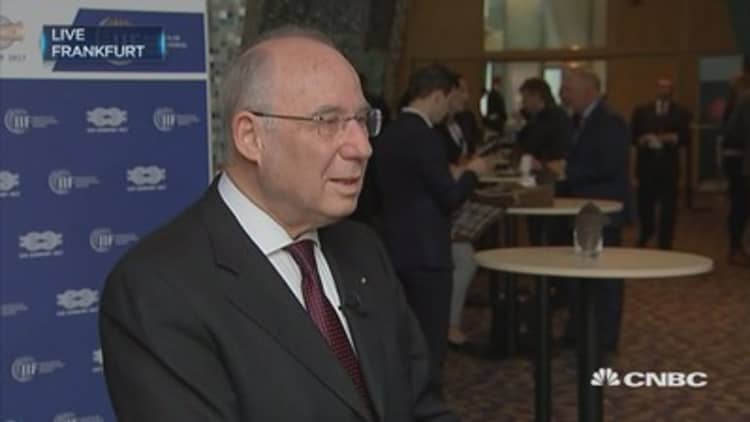
The U.S. Federal Reserve is set to raise interest rates between three and four times this year, the chairman of JPMorgan Chase International told CNBC on Wednesday.
Speaking from the IIF conference in Frankfurt, Jacob Frenkel explained that each one of the economic conditions that the Fed had set for itself in order to justify the commencement of rate rises had now been satisfied.
"Economic activity in the U.S. is now much more robust than it was, the unemployment rate is at a very, very low level, the composition of unemployment is also healthy, the duration of unemployment is lower. And also inflationary pressures are now coming more towards the 2 percent target of the Fed," Frenkel outlined.
Following a consensus-beating jobs report last Friday, financial markets have now fully priced in the probability of a Fed rate hike of 25 basis points when the rate-setting Federal Open Market Committee (FOMC) finishes its two days of deliberations later on Wednesday.
However, this month's anticipated rate rise should be interpreted as only the first of many such moves over the next 12 months, given that we are still so far away from a reasonable long-term configuration of interest rates, Frenkel said.
"We are still very close to zero while the normal configuration is around 3 percent or so…one needs to take the journey to go there," he affirmed.
"We should not think about it as a single step, we should think about it as a journey, as a strategy," Frenkel added.

Warning of the dangers of maintaining an irregular interest rate environment for too long, Frenkel said that by this time next year, U.S. interest rates should be at least one percentage point higher than their current range of between 0.25 percent and 0.50 percent.
"Late normalization is costly, it creates distortions, it affects the financial markets, it gives superficial, artificial boosts to financial investments instead of real investments. After all, we want to see economic growth, we want to see job creation and this is only going to be done if there are investments in plants and equipment," he said.
Considering the effect of a potential U.S. rate rise on other countries, Frenkel pointed to the exchange rate implications for Europe should the continent's central bankers maintain a much looser monetary policy as could continue to befit the situation in the view of regional policymakers.
He added that the anticipated depreciation of the euro versus the dollar in the wake of policy divergence could actually benefit the region.
"Europe needs to have higher productivity, higher profitability and therefore a weaker euro is serving Europe. So it is in this case, the U.S. raising rates is helping Europe and it will end up in a virtuous cycle."


